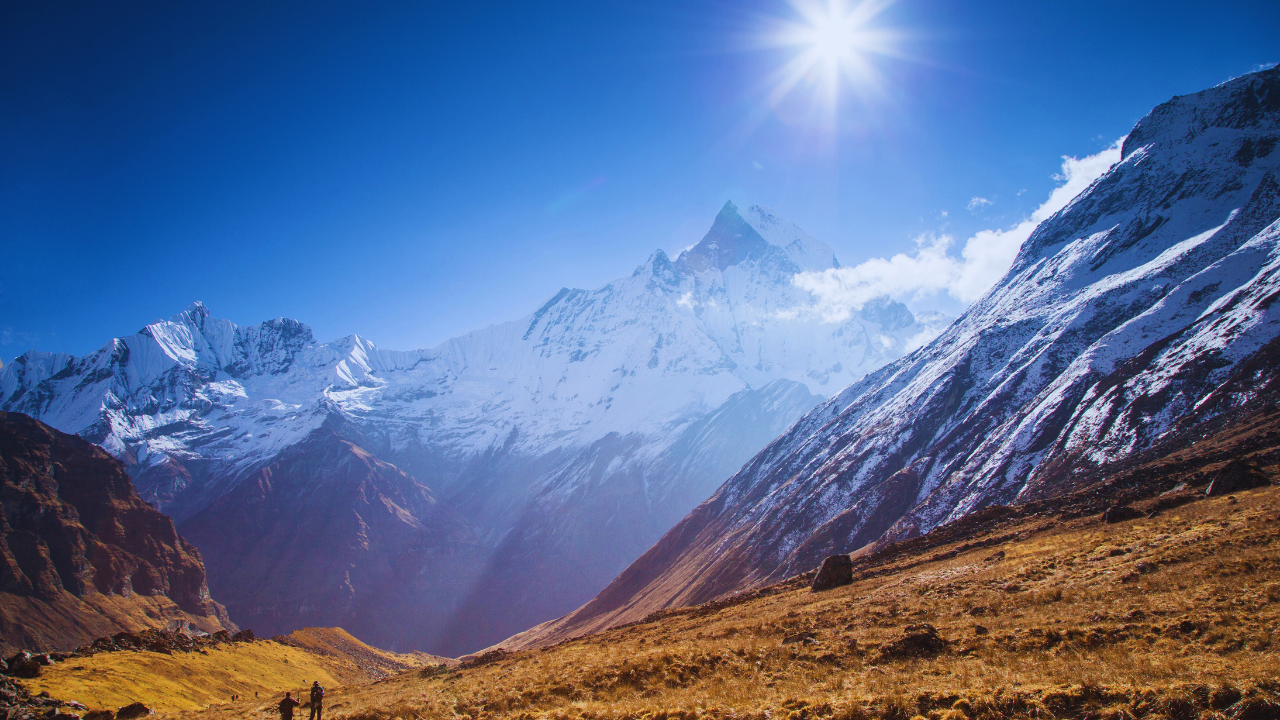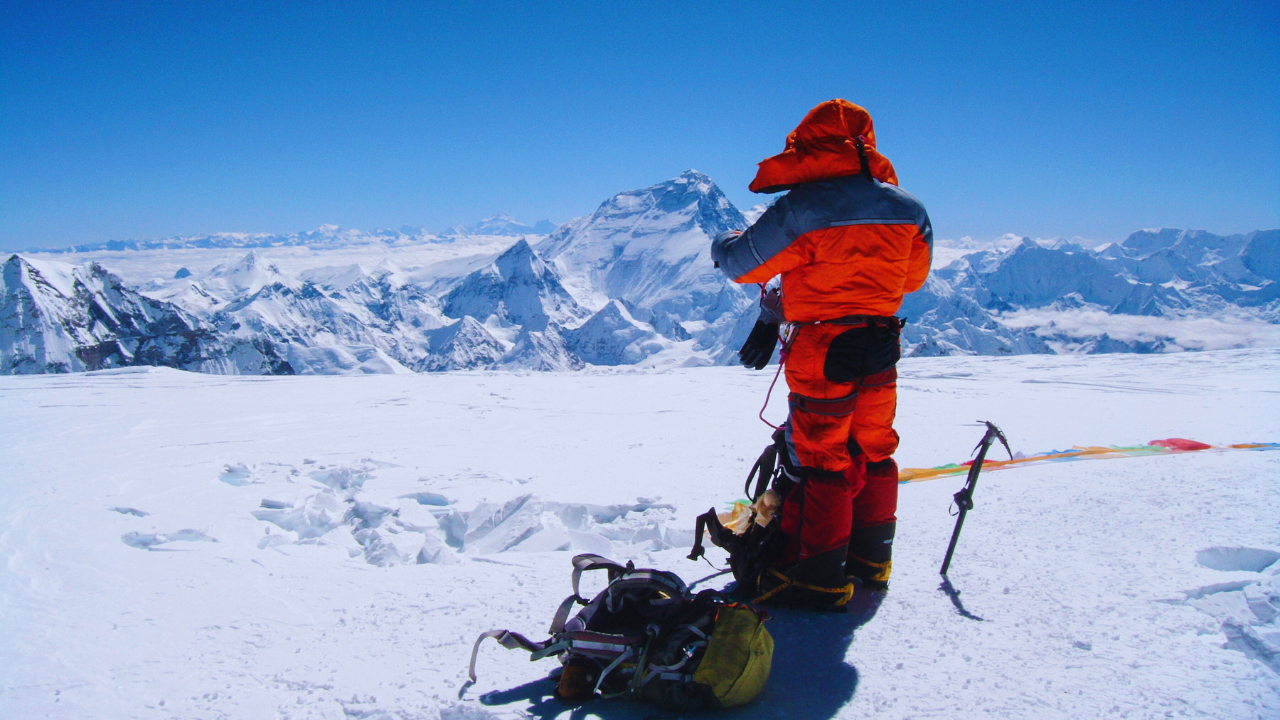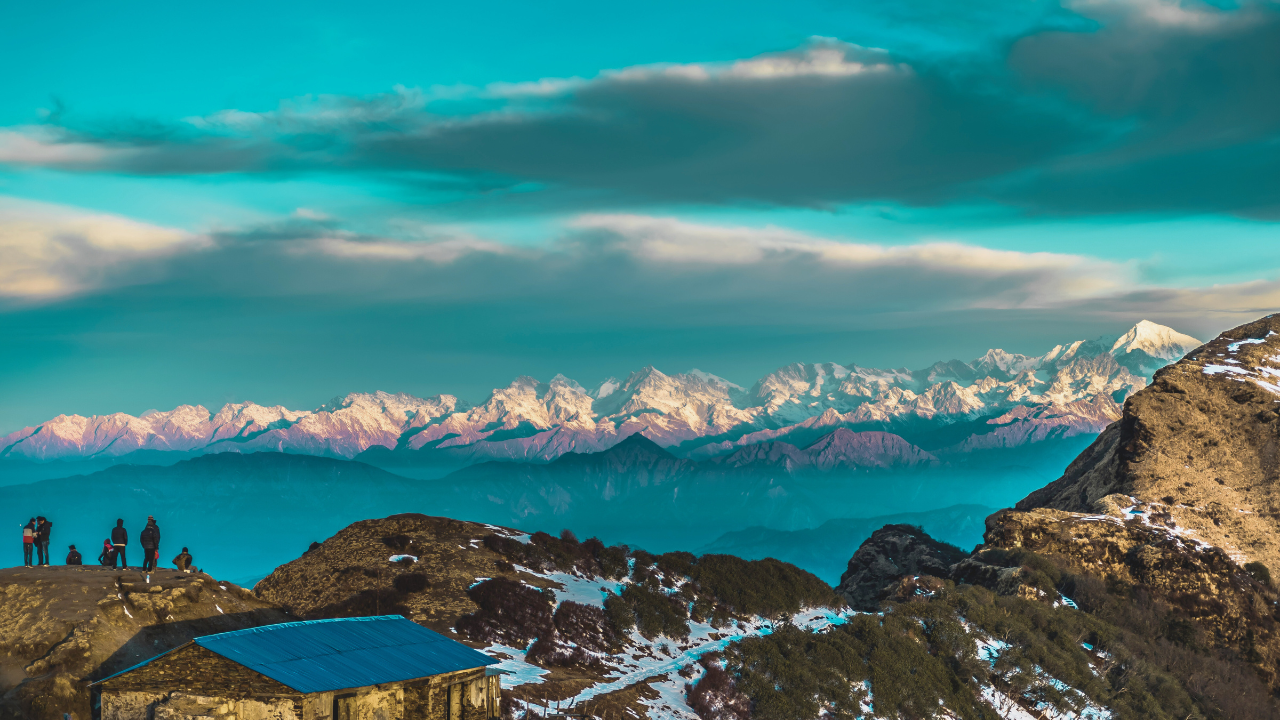Annapurna Base Camp (ABC) Trek during spring is the classic and most spectacular trek in Nepal. Experience the excitement of high-altitude trekking along with peaceful landscapes, lush green valleys, and rich local culture, a true delight. Although the trek can be made throughout the year, the Spring season, March to May, is the best time to experience the Annapurna area.
In Spring, the scenery is magical with white mountains and green valleys. Wildflowers blanket the meadows on the trail, birds chirp in forests, and pink and red rhododendron decorate the hillside. The weather is usually stable, and trekking is pleasant and warm, so adventure, landscapes, and culture on a trip to Annapurna Base Camp during Spring is magical.
The Annapurna area offers spectacular views of some of the highest mountains in the world, including Annapurna South, Machhapuchhre, Dhaulagiri, and Annapurna II. The trek is moderately challenging for the trekkers and a combination of experiences in rural village life, waterfalls, forest, terrace farming, agriculture fields, and tough mountain trails.
If you are an experienced trekker or you wish for your first Himalayan experience, the Spring ABC trek is one to remember.
Annapurna Base Camp trek can be done in 5–11 days based on the trekking route and trekking speed. The trek starts from Pokhara, which is a beautiful lakeside city, and proceeds through villages, terraced fields, forest, and waterfalls flowing down the hillside.
The trek proceeds towards Annapurna Base Camp at an elevation of 4,130 meters with a breathtaking view of the surrounding mountains.
Along the way, the trekkers encounter Magar and Gurung villagers, giving a glimpse of Nepalese life in the mountains. Village teahouses are available on the route, with hot meals, warm accommodations, and an experience of living like the locals.
Each location on the trails is unique, striking a balance between exposure to culture and awe at nature. From tranquil villages to amazing scenery, each day of the ABC trek is unforgettable.
Spring is generally the best season to trek in the Annapurna region.
Spring weather is extremely reliable, with mid-level temperatures, and therefore the most suitable for trekking. The day is sunny and warm, perfect for trekking for a couple of hours, and the evening is cool but not chilly. Spring is the best season to avoid the chilly winter as well as monsoon floods. Mid-level weather also adds to the energy, so trekking groups can utilize longer trails without tiring themselves as much.
The spring season is the time of the year when flowers bloom in Annapurna's landscape. The trekkers are blessed with an impressive view of magnolias, rhododendrons, and wildflowers along trek trails. The meadows and forests are surrounded by their colors and offer a surreal landscape.
The vegetation under the shadows of the mountain adds to the natural landscape of the region and offers a good and excellent landscape for photographers as well. Crossing over such canvassed grounds is an experience in itself; every step of the way is a pleasure to the senses.
Spring usually implies pleasant weather, and open sight of Annapurna, Machhapuchhre, and Dhaulagiri. Nature enthusiasts and photographers like the finest weather to capture landscapes. Open vision also allows the trekkers to relish the Himalayan landscape most perfectly. In contrast to winter, when cloudy conditions obstruct the view, Spring is best for viewing and photography.
Daytime is generally 20°C in Spring, and nighttime temperatures are 5°C. Even in March, it rains below zero in high places, but April and May have very much more comfortable temperatures. Even balanced weather is not tiring to the body during trekking and does not carry the risks of sickness from cold. During long days of hiking, such a balance of cold and heat is appreciated.
ABC trek in the spring offers a lifetime experience of culture, nature, and adventure. The major highlight includes the rural life, the fantastic mountain view, and the natural beauty of the region.
Ghandruk is a classic Gurung village located at an elevation of 1,939 meters between Annapurna's two ranges. Ghandruk is highly valued for its culture and is among the most sought-after stops of the ABC trek. Trekkers can observe multicolored Buddhist prayer flags covering stone houses, taste traditional native foods, and observe traditional Gurung rituals.
Ghandruk is also an acclimatization stop, which comes in handy, where the trekkers gradually acclimatize to high altitude before trekking higher. In addition to its beauty and cultural significance, the village also offers facilities like teahouses and lodges, thus it a comfortable resting place. Whether one begins or ends their trek, Ghandruk makes a lasting impression with its peace and beauty.
Poon Hill, 3,210m, is famous for the sunrise view of Annapurna, Machhapuchhre, and Dhaulagiri. It provides an excellent 360-degree panoramic view, with the Pokhara Valley down below. Poon Hill trek traverses the rhododendron forest and a typical Gurung village, blending nature and culture.
Beyond the impressions, Poon Hill is a significant acclimatization point, especially for trekkers who are beginners. The sun rising at dawn when it casts its rays on the snow-white summits is a view to cherish.
Chhomrong is the gateway to Annapurna Base Camp with panoramic views of Annapurna and Machhapuchhre. It is a large Gurung village with clean overnight stop tea houses. The village allows the trekkers to experience the Gurung culture.
The landscape also offers a simple climb to the higher altitude so that the trekkers acclimatize prior to ascending the steeper part of the trek. Nestled between mountains and serene rivers, Chhomrong is as much a simple resting ground as a serene sanctuary.
Jhinu is a small village famous for natural hot springs, a great spot to unwind after days of trekking. Bathing in the hot springs heals aching muscles and freshens the body for the day's walk. Trekkers enjoy stunning views of Annapurna South, Machhapuchhre, Annapurna II, and Dhaulagiri from Jhinu. The location is a highlight for its excellent views and rest, making it a trekker's heaven.
MBC is 3,700 meters, slightly short of the recognized Machhapuchhre summit. The trekkers walk through seven beautiful villages, including Lachok, Ghachok, and Ribhan, while climbing towards MBC. The base camp offers a spectacular view of the Annapurna north face and Machhapuchhre and serves as the second last camp during the ascent of the Annapurna Base Camp.
The trekkers can choose to rest in camp in a teahouse as per their choice and time. It is also a serious acclimatization spot that acclimatizes the trekkers to the high-altitude conditions at ABC. The view here is stunning and studded with the adventurous Himalayas.
Lastly, the trek ends at Annapurna Base Camp at an elevation of 4,130 meters. Under the shadow of giant mountains, the base camp itself is a paradise of wonder and achievement. The Himalayan 360-degree view bestows the trekkers with sights of peaks like Annapurna South, Machhapuchhre, Annapurna I, and Hiunchuli in all their glory and majesty.
The base camp itself is a tranquil spot to look back over the journey. Snowy mountains are overhead in all directions, glaciers sparkle in the sun, and the feeling of being at the very center of the Himalayas is awe-inspiring. To have reached ABC is not a physical accomplishment alone; it is an emotional and spiritual one that stays for life.















































Comments